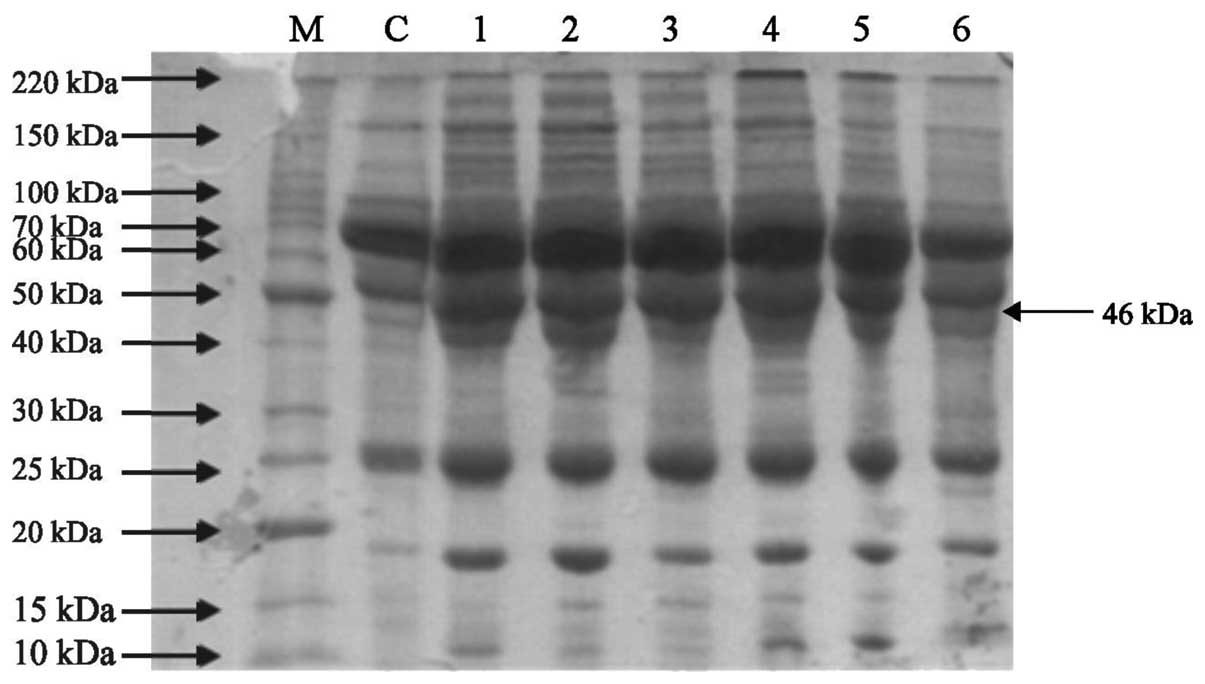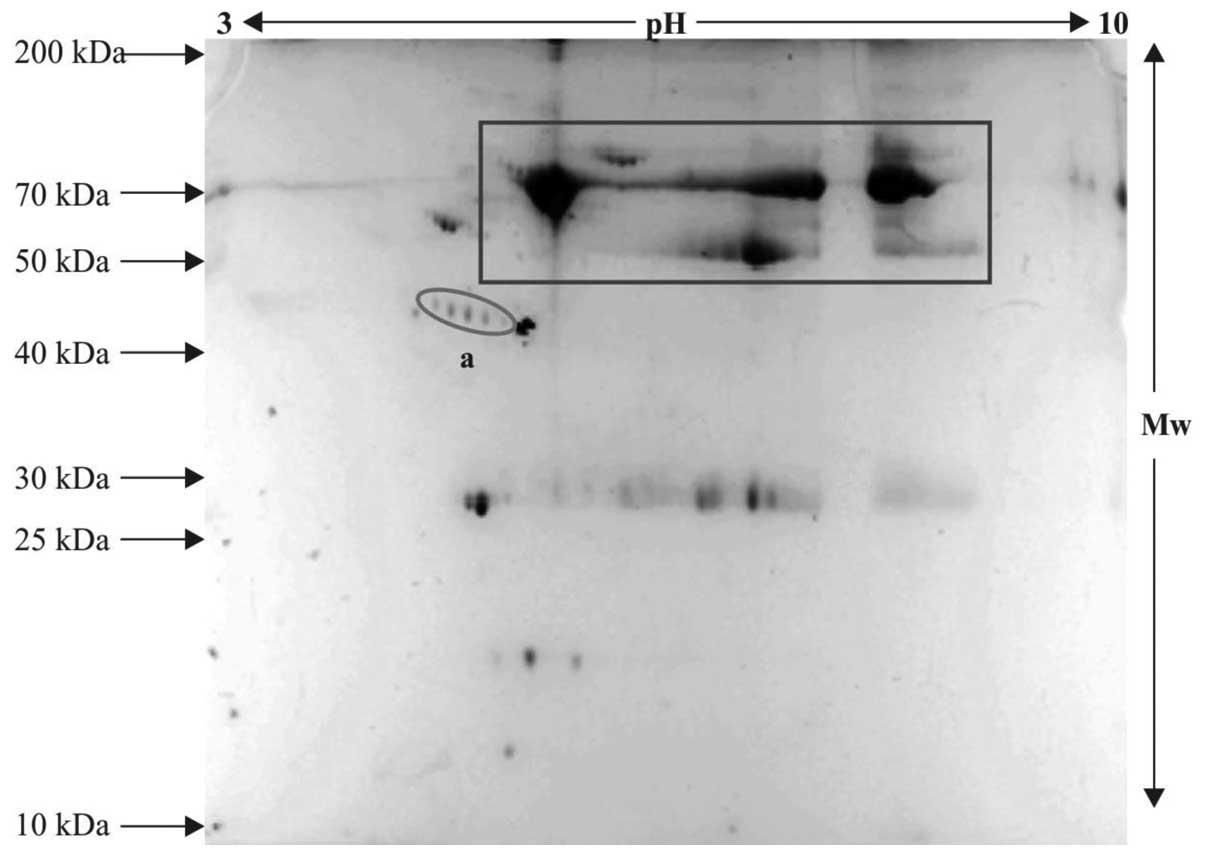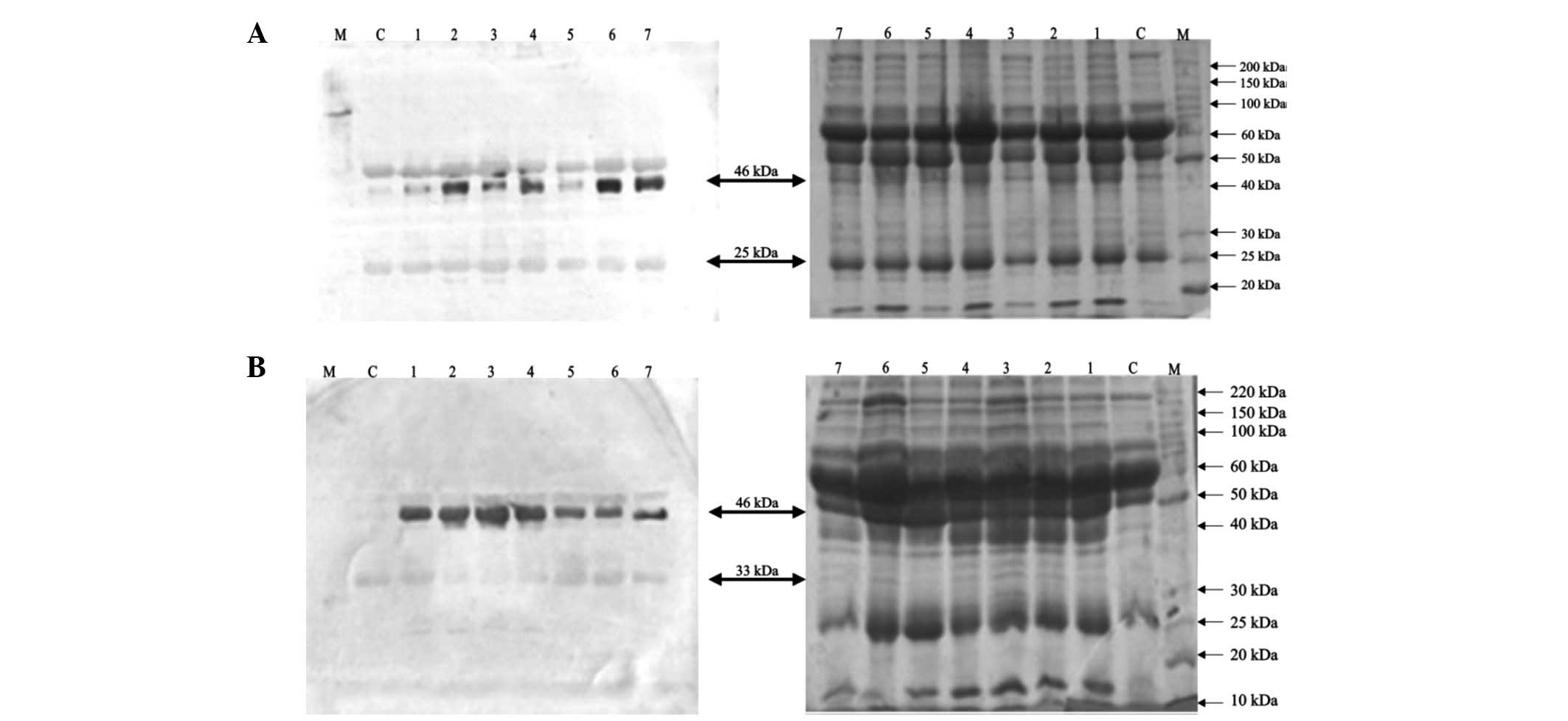Mass spectrometric identification, characterization and validation of the haptoglobin β-chain protein as a lung cancer serum biomarker
- Authors:
- Published online on: May 22, 2015 https://doi.org/10.3892/mmr.2015.3822
- Pages: 3755-3762
Metrics: Total
Views: 0 (Spandidos Publications: | PMC Statistics: )
Total PDF Downloads: 0 (Spandidos Publications: | PMC Statistics: )
Abstract
Lung cancer is the major contributor to overall cancer-related mortality. Biomarkers are important in early detection and prognosis, in addition to developing treatment regimes, which may improve the patient survival rates. Biomarkers may also assist in investigating the in depth metabolic pathways and in establishing a set of therapeutic agents leading to early detection of the disease. The present study was designed to identify and confirm a lung cancer protein biomarker and to correlate the differential expression of the protein to a particular histological disease type. A total of 100 lung cancer patients and 50 healthy controls were included in the present study and were categorized into the two main histological types of lung cancer; non‑small cell lung cancer (NSCLC; n=88) and small cell lung cancer (SCLC; n=12). NSCLC was further subclassified into three histological types; adenocarcinoma (n=34), squamous cell carcinoma (n=48) and large cell carcinoma (n=6). The patient and control serum samples underwent sodium dodecyl sulphate polyacrylamide gel electrophoresis characterization followed by two‑dimensional gel electrophoresis. Following mass spectrometry, human haptoglobin was identified with a mass of ~42‑46 kDa and an isoelectric point (pI) of ~5.5‑6.2. The experimental mass of the protein was found to be 45.8 kDa with a pI of 6.13. The matrix‑assisted laser desorption/ionization time‑of‑flight/time‑of‑flight data exhibited spectral peaks of 1146.134, 1724.191, 1345.339 and 2210.319 m/z and Mascot search analysis identified these peaks as haptoglobin (accession no. P00738; Mascot score 87; sequence coverage 23%). This protein was significantly overexpressed in squamous cell carcinoma and adenocarcinoma, as compared with the control. The present study described differentially expressed human haptoglobin as a lung cancer serum protein biomarker, which may serve as a diagnostic and therapeutic target and set a standard criteria for the evaluation of histological types of lung cancer compared with other disease types.
















